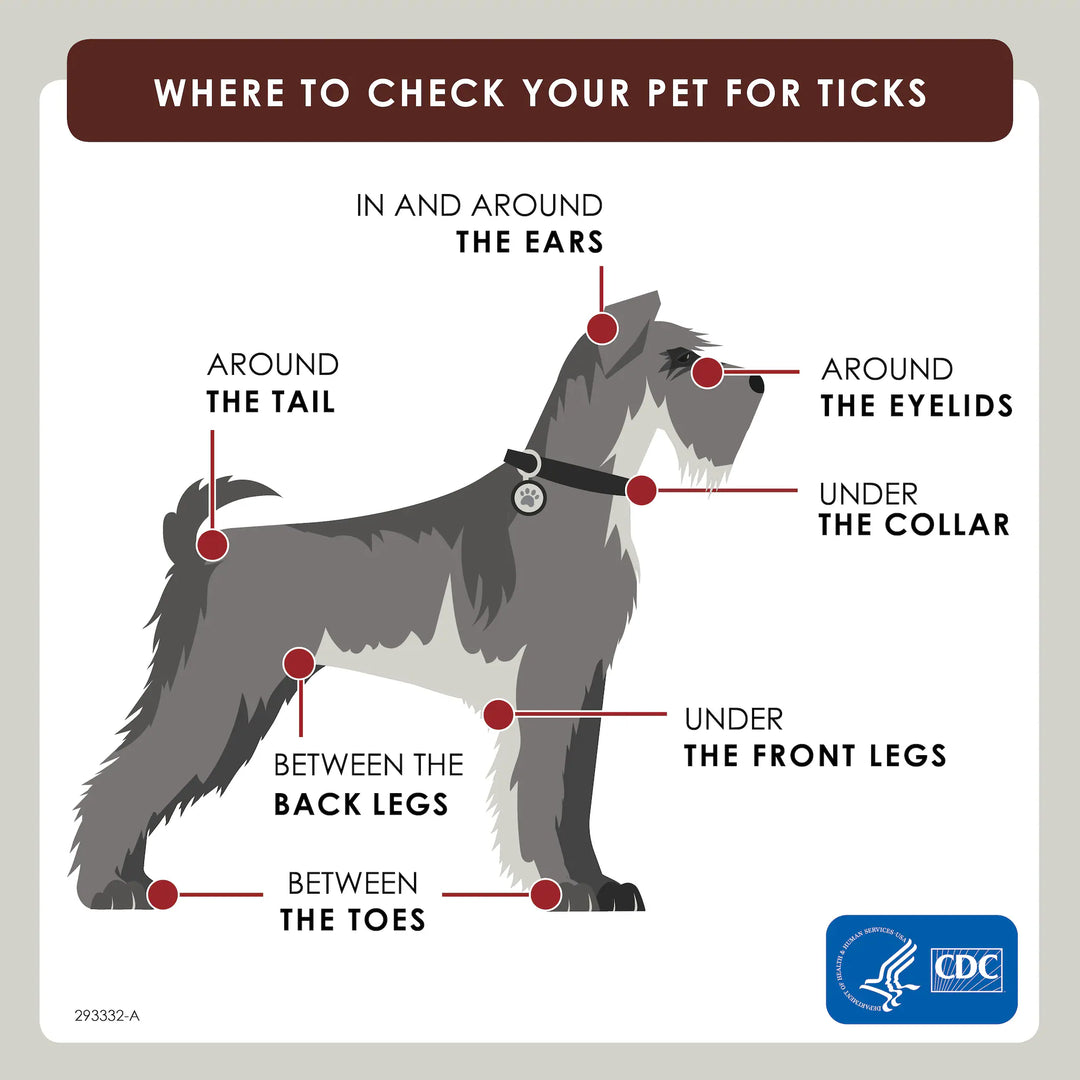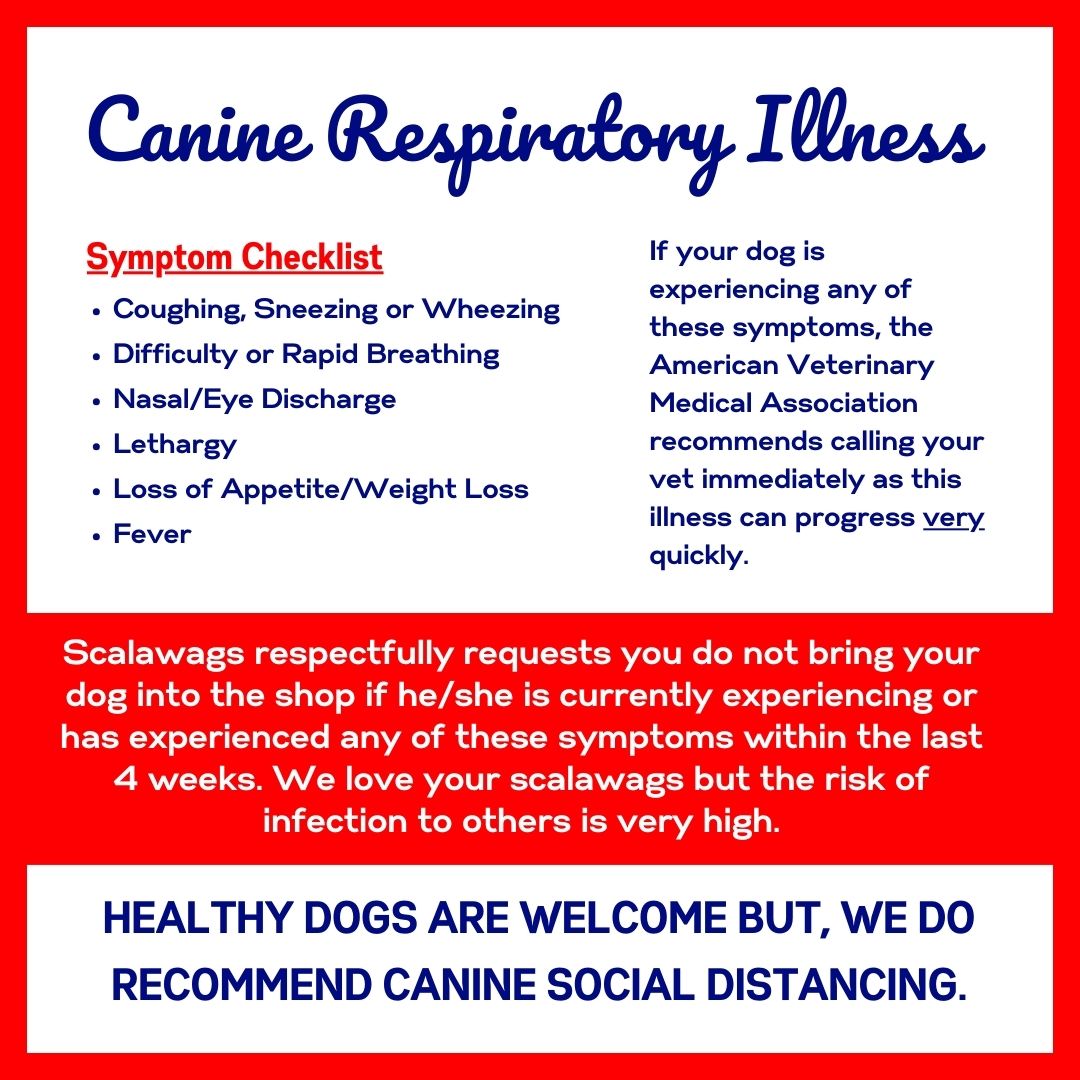Tick Check: Keeping Your Family & Furry Friends Tick-Free
It’s no secret that this winter has been a warm one. This unusually warm weather has led to the early return of a rather unwelcome creature – the tick.
As the weather continues to warm and tick activity increases, it is important to be aware of the risks associated with ticks and what you can do to protect your dog, and yourself, against them.
Tick Species
While there are more than 90 different species of ticks that inhabit the United States, below are the five species of biggest concern throughout the country:
- Deer Tick aka Blacklegged Tick (Ixodes Scapularis)
- American Dog Tick (Dermacentor Variabilis)
- Wood Tick (Ixodes Cookie)
- Brown Dog Tick (Rhipicephalus Sanguineus)
- Lone Star Tick (Amglyomma Americanum (Linnaeus))

Figure 1. A picture of just some of the human biting ticks found in New England. (FMI: https://www.cdc.gov/ticks/tickbornediseases/tickid.html)
Tick-Borne Diseases & Symptoms
These ticks carry diseases harmful to both humans and their pets. The most prevalent tick-borne diseases, include but are not limited to:
- Lyme disease (most reported cases are from the northeastern US)
- Canine Ehrlichiosis
- Canine Anaplasmosis
Symptoms can be different depending on the disease, but often include:
- Fever
- Poor appetite
- Swollen lymph nodes
- Joint pain
- Lameness
If not dealt with in a timely manner, some of these diseases can progress into kidney failure and death. Contact your doctor or veterinarian immediately if you experience symptoms.
Tick Prevention
So how exactly do you prevent ticks? To prevent ticks from attaching themselves to you or your pets, you can:
- Avoid walking in long grass and keep your yard mown
- Wear long pants and socks when outside
- Give your pets a vet approved oral or topical tick preventative
- Check yourself and your dog after each trip outside
- Tip: Tick checks can be a special bonding time between you and your dog, and they provide the perfect opportunity to check for other health or grooming issues. Reward your pooch with a favorite treat to make tick checks a positive experience.


Figures 2 & 3. Illustrations showing the places to give the most attention
to when checking yourself and dogs for ticks, as suggested by the CDC
(FMI: https://www.cdc.gov/ticks/gallery/index.html)
Tick Removal
In the event that a tick does attach itself to you or your dog, Scalawags recommends the Tick Key. With proper use, the Tick Key easily and effectively removes the entire tick, including the head and mouth parts of the tick, which can continue to spread disease even if the body is detached. 
We keep a Tick Key attached to a ribbon behind the counter at Scalawags just in case we find a tick on a canine customer. It is highly recommended you pick up several Tick Keys and keep them wherever they will be handy for you and your family when the need arises - first aid kit, keyring, backpack, car, garden shed, utility closet, wallet, etc.
Tick-borne diseases can be life-changing for humans and pets.
Please keep yourself and your pets safe by staying informed and vigilant.
Additional Resources
- To learn more about the incubation period and symptoms of specific tick-borne diseases visit:
- https://www.akc.org/expert-advice/health/tick-borne-diseases-dogs-prevent/
- https://www.cdc.gov/ticks/symptoms.html
- Tick species found in Maine: https://extension.umaine.edu/ticks/maine-ticks/
- Ticks and their future in Maine: https://www.newscentermaine.com/article/news/health/tick-and-lyme/maine-tick-season-2024/97-6c7f738b-9567-4076-8054-ffe7ba384752
















Leave a comment